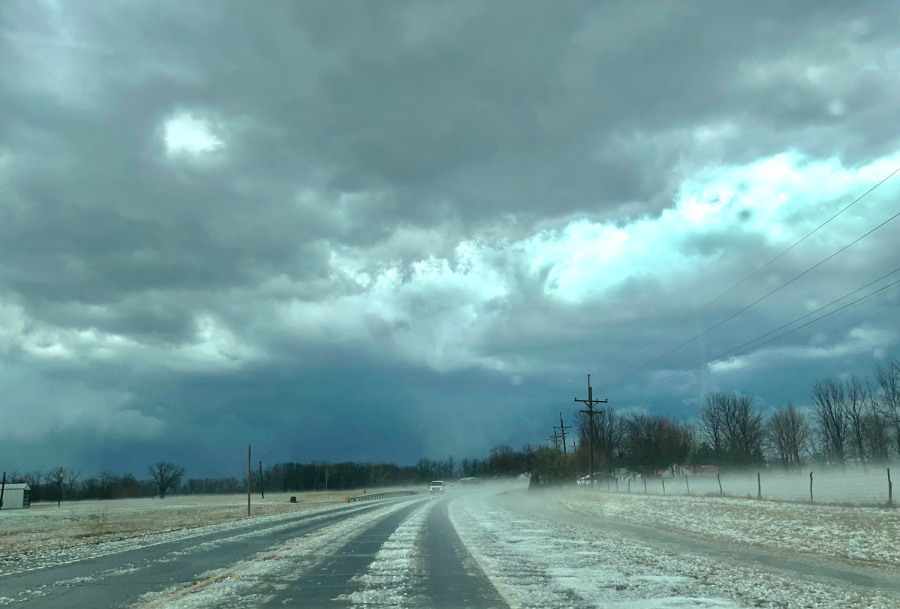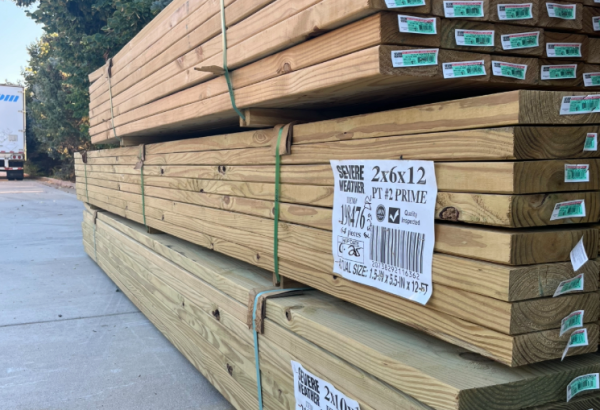National Weather Service tornado rating system needs updates
Photo By Nathan Lapitan
A tornado east of Canton, Illinois, on March 31, 2023. The tornado has been given a rating of EFU, which means it either didn’t strike anything to warrant a rating, or it caused damage but the damage surveyors weren’t able to reach the damage.
Just like other natural disasters in the world, tornadoes have their own rating system, and that rating system is called the Enhanced Fujita Scale, or EF scale, which was implemented on Feb. 1, 2007. This concept of rating tornadoes started in 1971, when Dr. Ted Fujita came up with a scale to rate tornadoes, from 0-5, originally called the Fujita Scale, or F scale.
The old Fujita Scale was used for 36 years until 2007, and it was used to rate countless tornadoes in the United States and across the globe. However, in 2007, the National Weather Service created a new scale to rate tornadoes: the EF scale.
According to the National Weather Service, the EF scale is “…used to assign a tornado a ‘rating’ based on estimated wind speeds and related damage.”
Along with changing the wind speeds for each tornado rating, the National Weather Service also came up with a “damage indicator” scale, or DI scale, made up of 28 damage indicators, and the NWS bases tornado ratings on the severity of the damage caused to one of the DI’s.
This part of the Enhanced Fujita Scale is where the most controversies come into play. Most people believe that the National Weather Service shouldn’t base tornado ratings on estimated wind speeds and damage indicators, and this becomes completely clear when looking at the most infamous tornado in history.
On May 31, 2013, a record-breaking 2.6-mile wide tornado hit the southern portions of El Reno, Oklahoma, killing eight people, including four storm chasers, the first such instance in history. Immediately after the tornado, the National Weather Service in Norman, Oklahoma, gave the tornado a rating of EF5, as wind speeds measured by a Doppler on Wheels (DOW) positioned near the tornado measured wind speeds of 302 miles per hour +/- 20 miles per hour, well into the threshold of EF5 force winds.
However, this EF5 rating would only last until Aug. 30, 2013, when the National Weather Service decided to lower the tornado’s rating to EF3 due to “the lack of EF5 force wind damage to any structures found anywhere in the path of the tornado,” according to public affairs worker for the National Oceanic and Atmospheric Administration (NOAA) Keli Pirtle.
The decision to lower the tornado’s rating to EF3 from EF5 caused immediate backlash from the weather community. However, when looking at how the National Weather Service rates tornadoes using the Enhanced Fujita scale, nowhere does it say tornadoes are rated based on wind speed. Had the tornado been rated using the older Fujita Scale, the EF5 rating would’ve most definitely stood.
I remember watching a live coverage video about this tornado, and I immediately knew the tornado could’ve been an EF5, knowing what the power of these monsters can be. As this was only 11 days after the 2013 Moore, Oklahoma, EF5 tornado, I compared damage pictures from both the Moore tornado and the El Reno tornado, and I immediately knew that the tornado was going to get an EF5 rating.
It wasn’t until 2020, seven years after the El Reno tornado, that I realized the El Reno tornado had been downgraded to an EF3 rating. Once I continued to do research, I felt the National Weather Service’s decision to lower the tornado’s rating was completely reasonable, as no EF5 wind speeds destroyed any buildings that were in the path of the tornado.
A more recent example of a controversial rating for a tornado was an EF4 tornado that occurred on Dec. 10, 2021, in western Kentucky.
On the night of Dec. 10, 2021, an EF4 tornado caused absolute devastation in the towns of Mayfield, Dawson Springs, Bremen, Kentucky and many others. The highest wind speed recorded in the tornado was 190 miles per hour, just 11 miles per hour below the threshold for a tornado to receive an EF5 rating.
When looking at damage from the hardest hit town of Bremen, houses were completely leveled and debris was nearly swept off the homes’ foundation. According to the National Weather Service Paducah office, anchor bolts holding homes to their foundations were bent, indicating that the tornado was extremely violent, but not violent enough to warrant an EF5 rating.
This sent the weather community into a firestorm of rage, as some felt that the damage was bad enough for the tornado to be given an EF5 rating. However, the National Weather Service Paducah office claimed, “This tornado (Bremen) only met a certain number of indicators which eventually added up to an EF4 rating.”
When I was watching this on radar the night of the tornado, I saw the radar signatures for the tornado, which clearly indicated that the tornado was violent, however at the time, no one, not even me, realized how deadly and destructive the tornado would end up being in the towns of Mayfield, Dawson Springs and Bremen, the three hardest-hit towns during the tornado’s 165-mile long path.
According to storm chaser Chris Riske, the Enhanced Fujita Scale is “…very outdated, fully depending on damage to rate a tornado and determine its wind speed was a practice that was born out of necessity.”
With that in mind, if the National Weather Service were to come up with a new way to rate tornadoes, they should include using radar wind measurements (velocity) to rate tornadoes. For example, if a tornado touches down and doesn’t cause any damage, it automatically receives a rating of EFU, the lowest rating a tornado can get.
However, if velocity wind speeds are brought into the way tornadoes are rated, meteorologists and damage surveyors can still give a tornado rating based on both wind speed and potential damage that is caused, instead of solely basing tornado ratings on damage caused by tornadoes.

Name: Nathan Lapitan
Position: Meteorologist
My favorite…
Movie: Twister
Show: Storm Chasers
Animal: Cat
Hobby:...











